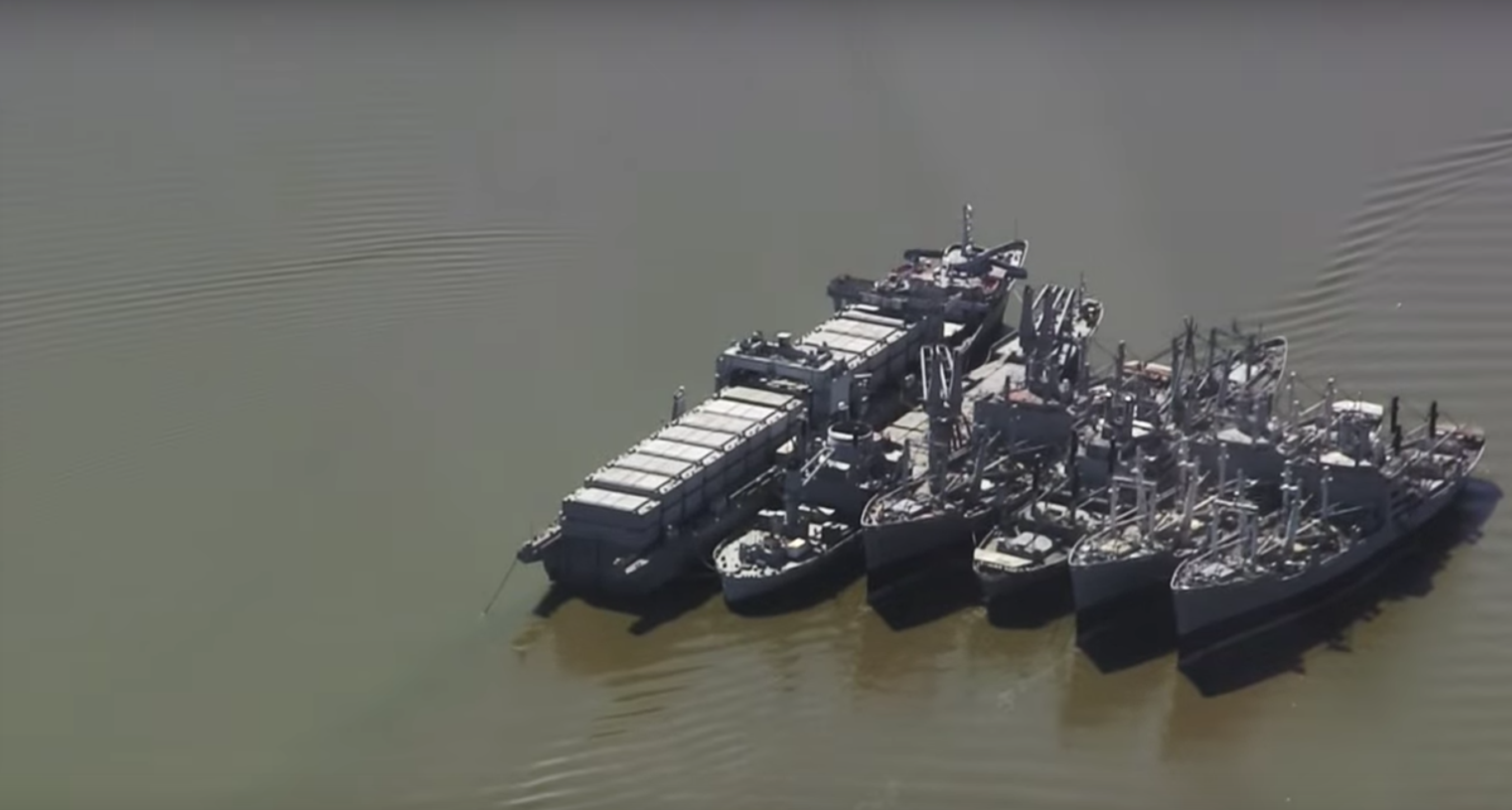
Faced with skyrocketing costs to repair the U.S.’s aging fleet of reserve merchant ships, the heads of the U.S. Maritime Administration and U.S. Transportation Command officials are pushing a program to buy more used vessels to fix a mobility at-sea readiness gap.
“I want to accelerate the used [ship] buy… We’ve got to put some actual dollars to that,” Army Gen. Steve Lyons, the commander of Transportation Command, told the House Armed Services readiness and seapower and projection forces subcommittees on Thursday.
The average age of the ships in the Ready Reserve Fleet is 44 years old. Maritime officials have told Congress that the used ships the government would be buying would be at least 10 years younger than the ones they are replacing, MARAD administrator retired Rear Adm. Mark Buzby told the panel.
“There will be a knee in the curve where it no longer makes sense to spend more money trying to repair these older vessels,” Buzby said.
“These ships are not getting any younger, and they are getting more expensive [to maintain and repair].”
The Navy is conducting a business case analysis of how to modernize reserve fleet, Lyons said. The surface life extension program for the fleet is proving “three times more expensive” and “taking twice as long” as projected to bring the existing fleet up to Coast Guard certification standards.
“The steel is rotting,” Buzby said several times during the joint hearing of the House Armed Services Seapower and Readiness subcommittees Thursday.
As to whether the best move would be to build ships in American yards, Lyons said, “the sticking point is affordability” and speed of delivery. In answer to an earlier series of similar questions, he said, “it’s going to be very, very difficult for [the Navy] to have those [five authorized] new builds” added to its existing shipbuilding program.
“I give a lot of credit to the Navy for diving” into an analysis of which is the best way ahead — surface life extension, buying used or building, he added.
To make the point with the panels as to the state of the reserve fleet, each member was presented with a placemat with a description of the kinds of ships involved, their age and condition.
“Time is the enemy,” Rep. Joe Courtney, (D-Conn.) and chairman of the seapower panel, said in putting off decisions on what comes next and actually improves mobility.
In his opening remarks, he said the Maritime Security Program also needs attention. It “is designed to ensure that the United States has the U.S.-flag commercial sealift capability and trained U.S. citizen merchant mariners available in times of war or national emergencies.” The program is part of a global network that includes terminals and logistics management that does not rely on foreign ships or facility owners and crews when needed.
Sixty vessels are covered in these agreements, a small fraction of merchant vessels operating now; overall, there are about 50,000 ships involved in global trade. There also are shortfalls in types of American ships that the military would require to respond to an emergency. For example, there are only six tankers available to haul petroleum; as a result, waivers have been granted for contracts with foreign owners to deliver fuel and, in some other cases, emergency aid as was the case with Puerto Rico following Hurricane Irma.
In addition to having a hull problem, the United States has a people problem when it comes to having properly trained and licensed mariners.
Bluntly stated, Lyons said, “I need the mariners first to get the gray hulls out.” Earlier studies said the United States is about 1,800 mariners short of identified requirements.
In answer to a number of questions, Buzby said MARAD is “working at additional levels to get people into the merchant marine,” starting with community colleges, but “we’ve got to give them more places to work” and the opportunity advance in their careers. “Getting more ships under the U.S. flag is the key here,” particularly in ships engaged in ocean-going trade, he said. He endorsed continuing the Jones Act’s provisions on shipbuilding in American yard and crewed by licensed Americans, a position that panel members supported.
Several of the committee members said they have to spell out to colleagues the value of the Jones Act to national security over their concerns about cost and availability of shipping.
As to whether autonomous vessels would fill the gaps in hulls and crew, Buzby said that kind of big ship is decades away and major cybersecurity issues and point fixing would need to be addressed before they could be relied upon and make a difference in cargo shipping. But they “could be assisting our vessels in a contested environment” relatively quickly.
Both mentioned an executive order signed this month designed to ease a transition from active duty sailors or Coast Guardsmen and sea service veterans to joining the merchant marine. The secretaries of defense and homeland security are to lay out how these men and women can become credentialed in the merchant marine over the next year. The order also waives a certain number of fees involved in the process.





